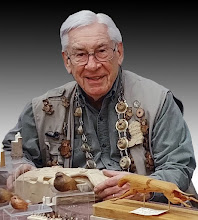Daniel Defoe was the author and captured this story before 1719 – when it was published.
According to Defoe’s account Crusoe was marooned on the island for 28 years – after a lifetime of sailing before hand. During the time alone on the Island he watches cannibal come ashore and eat people. He becomes a missionary at this stage (which would be very acceptable in 1719).
When one of the prisoners of the cannibals escapes Crusoe helps him, naming his new companion "Friday" after the day of the week he appeared. Crusoe then teaches him English and converts him to Christianity.
But the most recent account of this character known as Robinson Crusoe was in a movie of 1997 with Pierce Brosnan as Crusoe. But this movie was not even like the classic novel!
I have wondered about this story for a long time. I have thought of the person of Daniel Defoe and his active imagination. By the time that I enjoyed it as a boy – it had become a “classic novel”.
The actual story of the real Robinson Crusoe was entirely different than the movie or even the book.
The real story was about a real man named Alexander Selkirk (born Alexander Selcraig), born in 1676 and died on December 13, 1721. After a not so good record in life he ended up as a sailor. Eventually trying to convince a group of sailors to desert the ship they served on, no one would listen to him and the Captain granted his wish by leaving him on the Island of Juan Fernandez off the coast of Chile – now named Robinson Crusoe Island (map below)
 The story that Defoe wrote had him off the coast of Venezuelan – probably on Tobago.
The story that Defoe wrote had him off the coast of Venezuelan – probably on Tobago.Selkirk survived and lived on the Island for four years. The account of this is actually better than the Defoe account. It is thought that the Defoe account is one that was developed after Defoe heard the Selkirk account.
Fascinating to say the least. I love a good story. But when the story has another story behind it – it is even better.
In the world that I am in… I live a story that is or will be written by someone. Likely the grandkids will put something together some day. Who knows maybe the grandkids will actually create another kind of “Grandpa Robinson Crusoe” out of my life.
What I have gleaned in these short years of mine – there is always another story behind the story. There is always more to the story than I hear.
Last Sunday…
I sat in the Hastie carpenter’s shop in the Lang Pioneer Village. As people came by to talk and share their stories it was amazing. I literally heard a dozen stories an hour from the old fellows that stopped to talk.
One older man struck a conversation with me as he leaned on the rough beam that stands beside the entrance door. He had to be in his early 90s. He was leathered and worn with the years. Much like the old tools that I held he had been well used.
He asked me how I sharpened the tools that I used. This of course was a question that I knew didn’t really need an answer from me… rather he was about to tell me how I should do it.
He explained how he sharpened tools in his day. He was the person that everyone came to get their tools sharpened – the best there was in his days.
He said something that will stick with me for a long time…
“The tool doesn’t have to always be shiny to be sharp.”
Wow! What a thought.
The story of Robinson Crusoe was shiny – but maybe not sharp. The story of Alexander Selkirk was not the shiniest – but it was true and it was sharp… sharp enough to spark Daniel Defoe to write a “classic”.
Then I thought… is my life shiny or sharp?
Hmmm?
~ Murray Lincoln ~
http://www.murraylincoln.com/
Source:
http://en.wikipedia.org/wiki/Robinson_Crusoe
http://en.wikipedia.org/wiki/Alexander_Selkirk



No comments:
Post a Comment